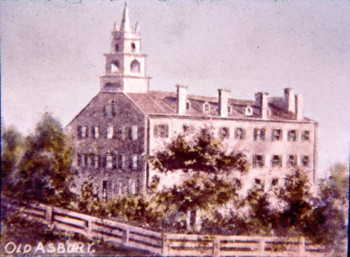East College is DePauw’s most iconic and quintessentially collegiate building. It also is one of its oldest. The cornerstone was placed on October 20, 1870.
Jesse Meharry, who once had proposed that the university be moved to his Tippecanoe County farm, donated money, as did Washington C. DePauw, enabling the university to complete the exterior, furnish the chapel and landscape the grounds. In June 1874, the building was far enough along to hold commencement ceremonies in the chapel; in fall 1875, classes met in the building for the first time. East College was dedicated at commencement in 1877.
The Class of 1879 donated a bell for the building’s bell tower, which also houses a clock donated by the citizens of Greencastle. For many years, the bell was hand-rung to mark special occasions, celebrate athletic victories, and signal class start times. Enterprising students also enjoyed ringing it as a prank.
Meharry Hall is located on East College’s second floor and is the site of student convocations and other events. With its wooden blinds, high ceiling, wooden pews and picturesque balcony, it has the feel of a vintage chapel. Some students claim it is haunted.









